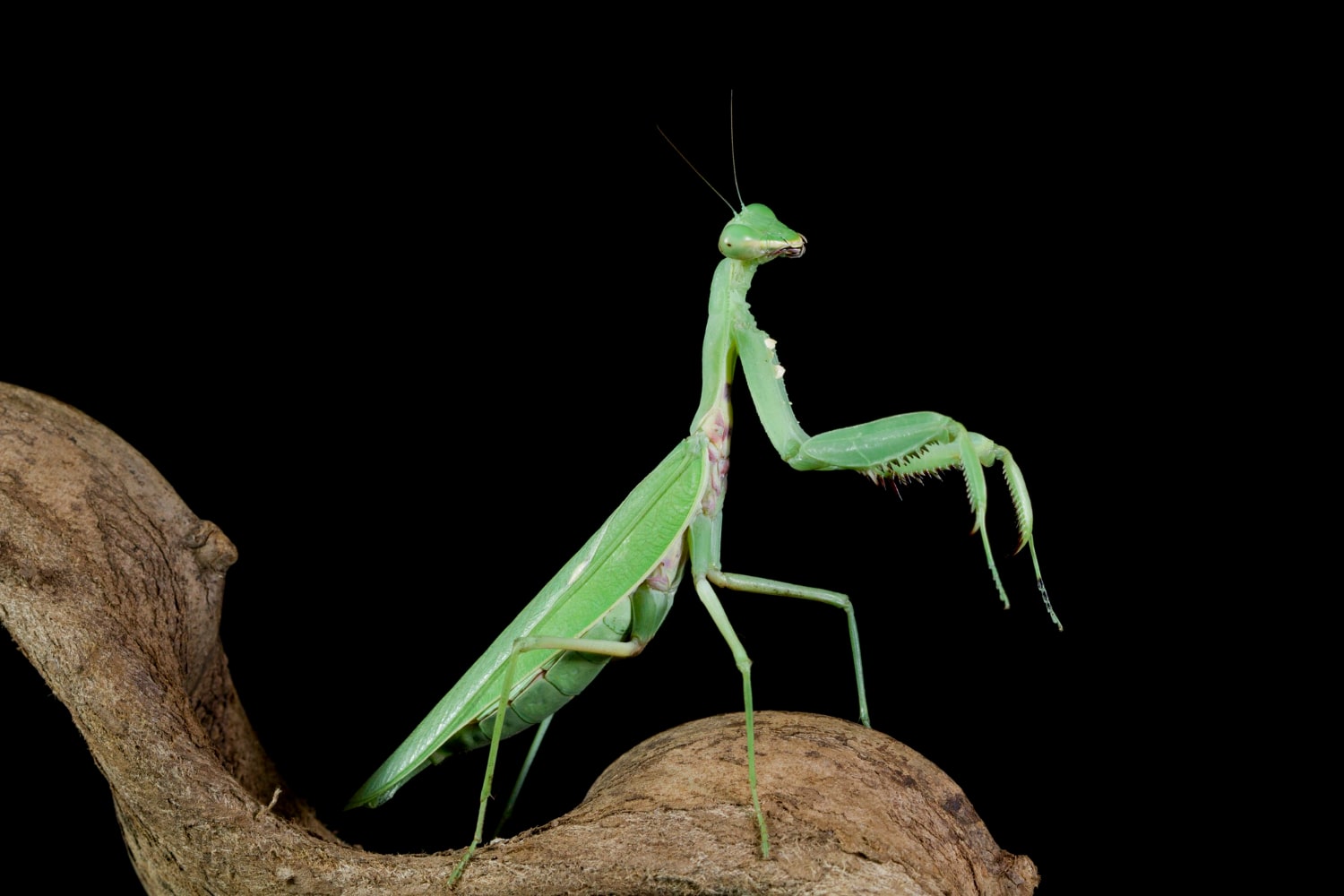The insect world is full of astonishing creatures, and one of the most mysterious among them is the praying mantis. These predatory insects captivate both scientists and nature enthusiasts with their appearance, behavior, and hunting skills. Their complex traits make them an important part of ecosystems, helping to control other insect populations. We’ve compiled a list of fascinating and surprising facts about praying mantises that you may not have known.
- The name “praying mantis” comes from the characteristic position of its front legs, which resemble a prayer pose. This posture is not only symbolic but also practical, as these limbs are used to catch prey. With sharp spikes on the inner side, they grip the prey firmly. The attack happens with lightning-fast speed.
- There are over 2,400 known species of mantises found across nearly all continents except Antarctica. The greatest diversity is seen in tropical regions of Africa, Asia, and South America. Their size ranges from just a few millimeters to 15 centimeters. Some species are brightly colored and resemble flowers.
- Praying mantises are one of the few insects that can turn their heads from side to side. They can rotate their heads up to 180 degrees. This gives them a much wider field of vision when scanning for prey or threats. It is a rare ability among insects.
- Their vision is considered one of the best among invertebrates. Mantises have two large compound eyes and three simple eyes on the top of their heads. They can accurately judge distances and detect even the slightest movement. This makes them extremely precise hunters.
- Mantises are capable of hunting prey larger than themselves. Their diet includes not just flies but also grasshoppers, butterflies, spiders, and even small lizards. Larger species have been observed catching small birds and rodents. They are truly fearsome predators in the insect world.
- Mantises are often associated with cannibalistic behavior, especially during mating. Females sometimes consume the males either during or after copulation. This behavior provides extra protein needed to produce eggs. However, it doesn’t always occur, and some males do escape.
- Mantises have excellent camouflage that helps them avoid predators and sneak up on prey. Some species mimic leaves, twigs, or even orchids. Their coloration blends in with their environment. This mimicry is impressively accurate.
- Although their movements may seem slow, it’s an illusion. Mantises can remain motionless for hours and then strike suddenly. The speed of their attack can be as fast as 70 milliseconds. The human eye can barely register such a quick move.
- The life cycle of a praying mantis includes three stages: egg, nymph, and adult. They do not go through a pupal stage like butterflies. Young nymphs look like miniature versions of adults and begin hunting immediately. Their development is influenced by environmental conditions.
- When threatened, mantises display their wings and reveal bright patterns to scare away attackers. This threat display is often accompanied by hissing or body swaying. It creates the illusion of a dangerous creature. This type of behavior is known as deimatic display.
- Some praying mantises can fly, but this ability is mostly seen in males. Females are usually larger and heavier, making flight difficult or impossible. Males use flight mainly to search for mates. In the air, mantises are less agile than many other insects.
- Mantises benefit agriculture by feeding on harmful pests. In many countries, they are used as natural biological control agents. They serve as an alternative to chemical pesticides. However, they may also consume beneficial insects, so their use requires caution.
- In various cultures, mantises have symbolic meanings associated with spirituality, patience, or omens. In southern Africa, they are considered good luck. In ancient China, they were symbols of courage and determination. Their mystical reputation comes from their appearance and unique behavior.
- In recent years, mantises have inspired engineers and scientists in the field of robotics. Their limbs and visual systems help in designing precise gripping mechanisms. The structure of mantises contributes to modern technological advancements. Nature continues to teach us through such remarkable creatures.
These amazing facts about praying mantises show how extraordinary even the smallest life forms can be. You may not have known that these insects are expert hunters, masters of disguise, and a source of scientific inspiration. Praying mantises are a true marvel of nature, blending elegance with lethality. They remind us that every living being holds a unique role and value in the ecosystem.





